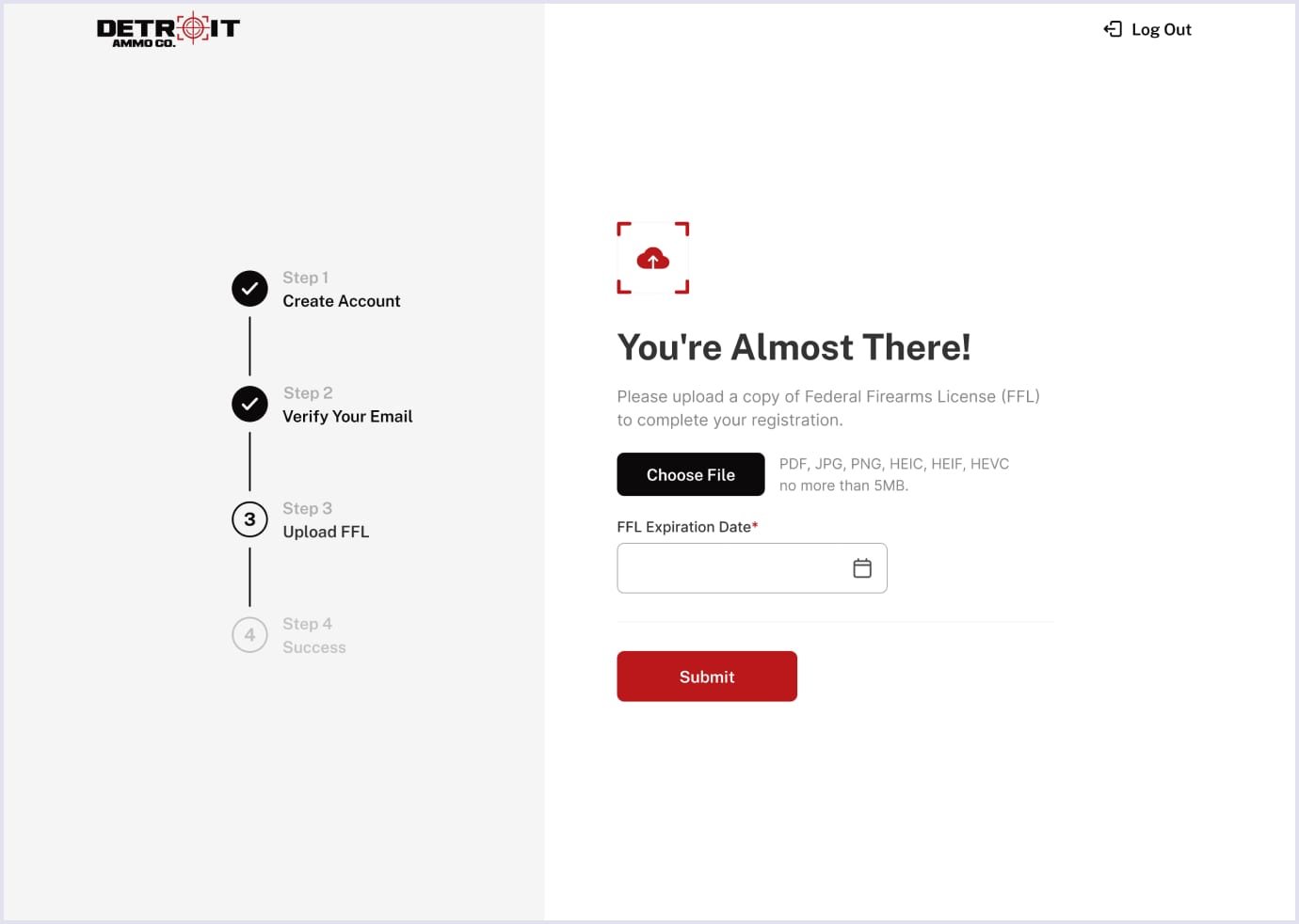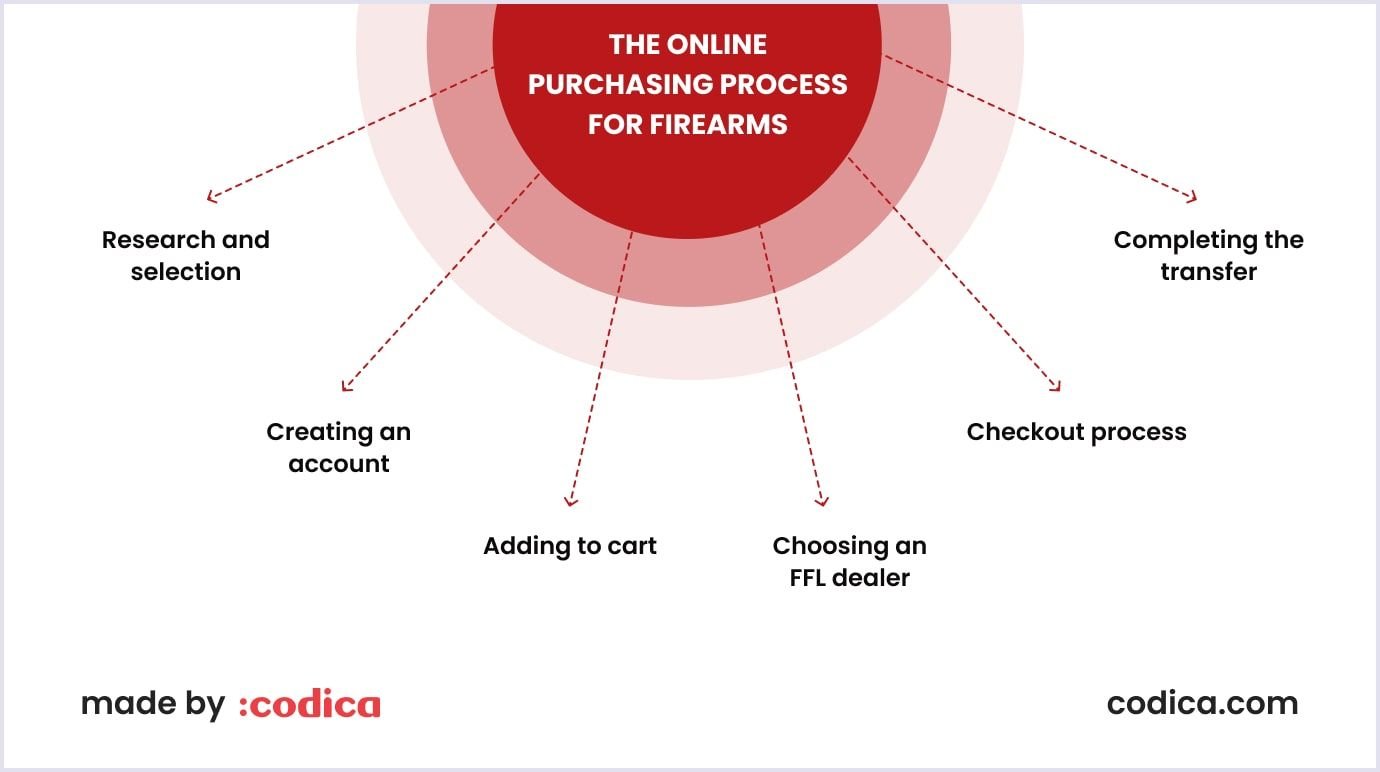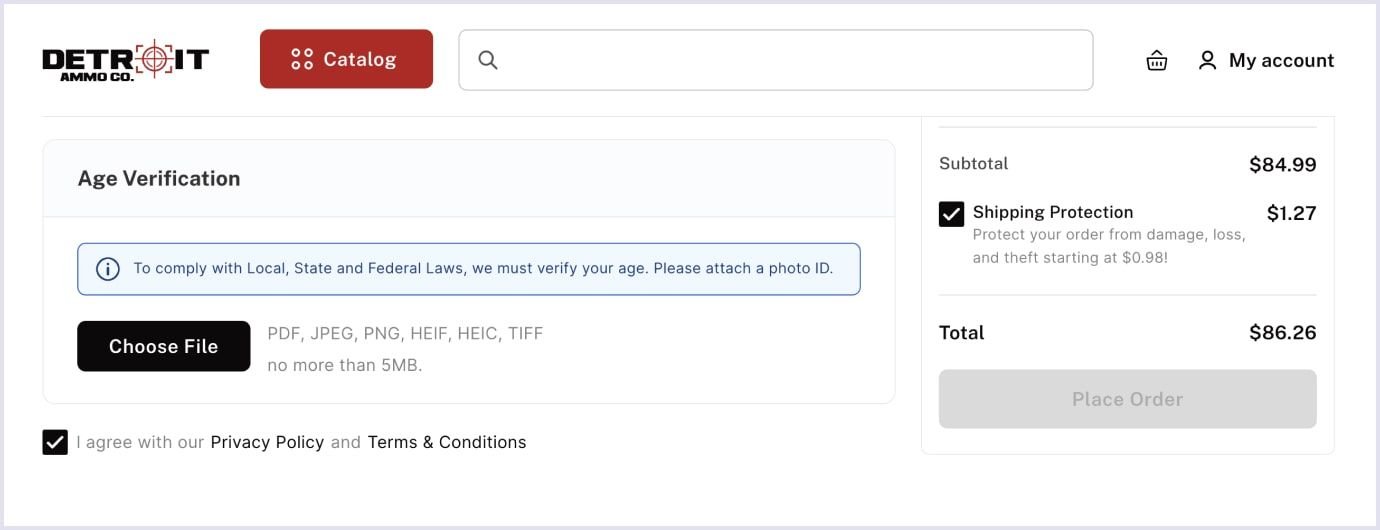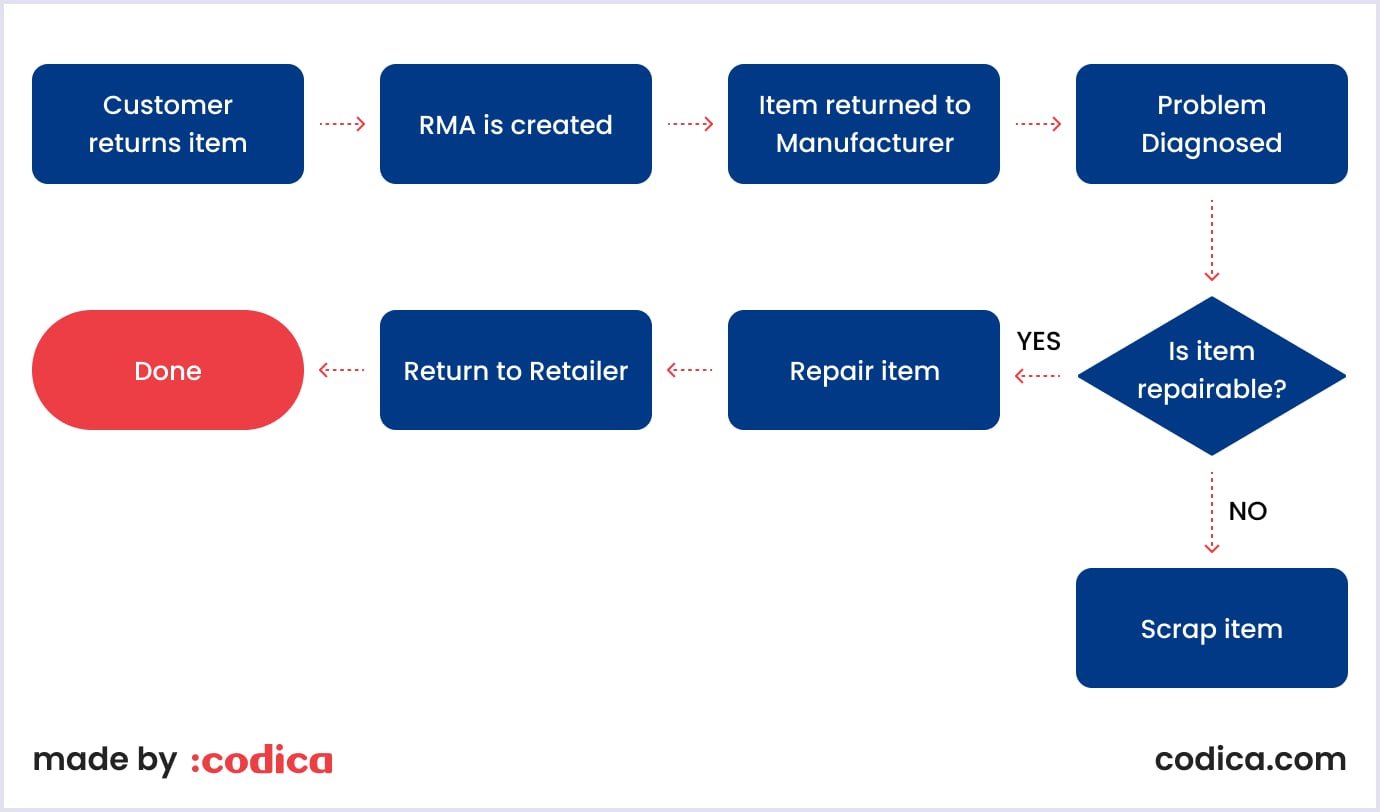Online gun sales, once a niche market, have moved into a significant sector, offering both convenience and anonymity to buyers. This shift has caused a complex debate containing legal, ethical, and safety concerns. As traditional gun shops compete with online platforms for dominance, questions arise about the effectiveness of background checks, the enforcement of federal and state regulations, and the potential implications for public safety.
In this article, we will explore the world of online gun sales in the US and the regulations, restrictions, and more. Before building your marketplace, you need to understand what regulation framework the general market will set for you.
Let’s get started!
Understanding state laws and FFL compliance
In the United States, the regulation of firearms involves a complex interplay between federal and state laws. While federal laws provide a broad framework for firearm regulation, state laws can set additional restrictions and requirements. Comprehending these laws, particularly in the context of online gun sales issues, is crucial for both sellers and buyers of firearms.
State regulations on online gun sales
In fact, online gun sales websites have become increasingly common, but they are subject to strict regulations to ensure public safety. All interstate firearm transfers must involve a Federal Firearms License (FFL) holder at the federal level. However, state laws can further complicate this process by adding more layers of regulation.
For instance, some states have specific laws that restrict certain types of firearms or require additional steps in the purchasing process. States like California, New York, and New Jersey have some of the strictest gun laws in the country. In California, for example, all firearm sales, including those conducted online, must go through a licensed dealer. This means that even if a buyer finds a firearm online, the transfer must occur at a physical FFL location in California, where state-specific background checks and waiting periods are enforced.
Other states, such as Texas and Florida, have more tolerant regulations but still require that all online firearm purchases be shipped to an FFL holder in the buyer's residence. The buyer must then complete the necessary paperwork and pass a background check before taking possession of the firearm. Additionally, some states may have unique identification requirements, mandatory training, or specific licensing beyond federal law.
State laws also vary regarding private sales, which can sometimes occur without the involvement of an FFL. However, states like Colorado and Washington mandate background checks for all private sales, closing what is often referred to as the "gun show loophole." Both buyers and sellers need to understand the specific laws in their state to ensure compliance and avoid legal repercussions.
Federal Firearm License requirements
The FFL is a critical component of firearm regulation in the United States. It allows individuals or companies to manufacture, import, and sell firearms and ammunition. The requirements for obtaining an FFL are set by the Bureau of Alcohol, Tobacco, Firearms, and Explosives (ATF) and include several vital steps.

First, applicants must complete ATF Form 7 (Application for Federal Firearms License) and submit it with the required fee. The fee varies depending on the license type but ranges from $30 to $3,000. The application process includes a thorough background check, fingerprinting, and an interview with an ATF investigator.
Applicants must also comply with all state and local laws. This means they must ensure that their business location is properly zoned for firearm sales and that they have any necessary state or local permits. Additionally, applicants must demonstrate that they have a legitimate business purpose for obtaining an FFL; it cannot be for personal firearm collection purposes.
Once an FFL is granted, licensees must adhere to strict record-keeping requirements. This includes maintaining an accurate log of all firearms transactions, which the ATF can inspect at any time. FFL holders must also conduct background checks on all buyers, adhere to all state and federal firearm laws, and ensure secure storage of firearms to prevent theft or misuse.
Renewing an FFL is required every three years, and licensees must stay informed about any changes in firearm laws and regulations to maintain compliance. Failure to comply with FFL requirements can result in severe penalties, including fines, license revocation, and criminal charges.
Compliance with background checks
These checks are a fundamental aspect of firearm regulation designed to prevent individuals who are prohibited from owning firearms from acquiring them. Under the Brady Handgun Violence Prevention Act of 1993, federally licensed firearms dealers are required to conduct background checks on prospective buyers.
The National Instant Criminal Background Check System (NICS) is the primary tool for these checks. When a buyer attempts to purchase a firearm, the FFL dealer contacts the NICS, which cross-references the buyer's information against various databases to identify disqualifying factors. These factors include felony convictions, domestic violence restraining orders, mental health adjudications, and other criteria that would prohibit firearm ownership under federal law.

Background check requirements can vary significantly between states. While some states rely solely on the federal NICS check, others have implemented their background check systems or require additional checks. For example, California uses its database with NICS and imposes a mandatory 10-day waiting period for all firearm purchases. On the other hand, some states have "permit-to-purchase" laws, requiring prospective buyers to obtain a permit or license before buying a firearm. This process usually involves a more comprehensive background check and, in some cases, mandatory safety training.
It is important to note that certain sales, such as those between private individuals, are not subject to federal background check requirements unless they occur across state lines. However, as mentioned earlier, many states have closed this loophole by mandating background checks for all firearm transactions, regardless of the seller's status.
Ensuring compliance with background check requirements is essential for FFL holders. Failure to conduct a required background check can result in significant legal consequences, including the revocation of the FFL and criminal charges. For buyers, understanding and complying with background check requirements is equally important to avoid inadvertently violating the law.
How to place an order on an online gun sales platform?
In general, purchasing a firearm online involves several steps to ensure legal compliance and safe transactions. Here’s a comprehensive guide on how to place an order on an online gun sales platform, including the online gun purchasing process, age verification procedures, and payment options with security measures.
Online purchasing process
How to sell guns online? The online gun purchasing process is designed to be straightforward yet thorough to ensure legal compliance and safety. Here’s a detailed look at the steps involved:

1. Research and selection
Start by researching reputable online gun sales websites. Look for platforms with good reviews, transparent policies, and a wide selection of firearms.
Once you've found a suitable platform, browse through the available firearms. Most platforms allow you to filter by type, brand, price, and other specifications. Read product descriptions and reviews and check for any available warranties or return policies.
2. Creating an account
Before purchasing, you must create an account on the platform. This typically involves providing your name, address, email, and phone number. Some platforms might require you to submit a scanned copy of a government-issued ID for age verification.
3. Adding to cart
After selecting the firearm you wish to purchase, add it to your shopping cart. At this stage, you may also choose to buy additional accessories such as ammunition, scopes, or gun safes.
4. Choosing an FFL dealer
Federal law requires that firearms purchased online be shipped to a FFL holder. The online platform will typically have a directory of FFL dealers. Choose an FFL dealer near you, and ensure you contact them beforehand to confirm they will handle the transfer.
5. Checkout process
Proceed to the checkout. Here, you will confirm your shipping details and FFL dealer. The platform will then ship the firearm to the chosen FFL dealer.
6. Completing the transfer
Once the firearm arrives at the FFL dealer, you will be notified to come in and complete the transfer. This involves filling out Form 4473 and passing a background check. Once approved, you can take possession of your firearm.
Age verification procedures
Ensuring that firearms are sold only to eligible individuals is a critical aspect of the online gun sales process. Age verification is an essential step to prevent unlawful sales.

1. Initial verification
When creating an account or purchasing, the platform may require you to provide your date of birth. This is to ensure that you meet the minimum age requirement of 18 for long guns and 21 for handguns, as mandated by federal law.
2. Government-issued ID
To further verify age, you may be required to upload a copy of a government-issued ID, such as a driver's license or passport. This helps the platform confirm that you can legally purchase a firearm.
3. FFL dealer verification
The FFL dealer will verify your age and identity during the final transfer process. They will check your ID and ensure it matches the information provided during the online purchase.
4. Additional state requirements
Some states have additional age verification requirements. For instance, California requires a Firearm Safety Certificate, which involves passing a written test. Be sure to understand and comply with any state-specific requirements.
Payment options and security measures
Providing secure and reliable payment methods is vital for buyers and sellers in the online firearms market. Here’s a breakdown of the payment options and security measures commonly used:
1. Payment methods
Online gun sales platforms typically offer several payment options, including credit/debit cards, bank transfers, and sometimes third-party payment services like PayPal or specialized firearm payment services. Choose a payment method that you are comfortable with and ensure it offers some level of buyer protection.
2. Security measures
- Encryption: Ensure the platform uses SSL encryption to protect your personal and payment information during the transaction.
- Secure payment gateways: Look for platforms that use secure payment gateways. These gateways encrypt your payment information and add a layer of security.
- Two-factor authentication: For account security, opt for two-factor authentication platforms. This adds an extra layer of protection by requiring you to verify your identity using a secondary method, such as a text message or authentication app.
3. Fraud prevention
After entering your payment details, some platforms might ask for a verification code (CVV) from your credit card to ensure the card is in your possession.
Many platforms use automated systems to monitor transactions for signs of fraud. If a transaction is flagged, you might be asked to verify additional information or provide confirmation.
4. Order confirmation and tracking
After completing the payment, you should receive an order confirmation email. This email will include details of your purchase and tracking information for the shipment to the FFL dealer. Keep this information handy until the transfer is complete.
5. Refund and cancellation policies
Familiarize yourself with the platform's refund and cancellation policies. If an issue arises, such as a failed background check, understand what steps to take to receive a refund or return the firearm.

Common fees, taxes, shippin, and returns
Purchasing firearms online involves navigating various fees, taxes, shipping procedures, and return policies. It is important to consider these components to ensure a smooth and compliant transaction. Let's analyze them in more detail!
Fee structures
When purchasing a firearm online, several fees may be involved:

Purchase price
This is the base price of the firearm listed on the online platform. Prices can vary widely depending on the firearm's type, brand, and condition.
Transfer fees
Since federal law mandates that firearms purchased online be shipped to an FFL dealer, you typically need to pay a transfer fee to the FFL holder. These fees can range from $20 to $75, depending on the dealer.
Shipping fees
These costs vary based on the firearm's size, weight, and destination. Many platforms provide an estimate of shipping costs during the checkout process. It's important to note that shipping firearms involves additional regulations and security measures, often increasing the price.
Background check fees
Some states require buyers to pay for the background check process. This fee can range from nominal to $25 or more, depending on state regulations.
State and local fees
Certain states and localities impose additional fees for firearm purchases, such as mandatory registration fees, safety training fees, or state-imposed transaction fees.
Thus, understanding these fee structures helps buyers anticipate the total cost of purchasing a firearm online and avoid surprises during the transaction process.
Tax implications
In fact, tax implications for online firearm purchases can be complex, as they vary based on federal, state, and local regulations:
Sales tax
Most online firearm sales are subject to state sales tax, which varies by state. Some states have reciprocal tax agreements, meaning the sales tax rate applied will depend on the buyer's state of residence. Online platforms usually calculate this tax during checkout based on the shipping address provided.
Excise tax
Under the Pittman-Robertson Act, firearms and ammunition are subject to a federal excise tax. Manufacturers, producers, and importers are typically responsible for this tax, but it can affect the final sale price to the consumer. The excise tax is generally 10-11% of the wholesale price of firearms and ammunition.
Use tax
If a buyer purchases a firearm from an out-of-state seller and no sales tax is collected, they may be responsible for paying a use tax in their home state. This tax is equivalent to the sales tax and ensures that all purchases are taxed appropriately, regardless of the seller's location.
Record keeping
Buyers should keep detailed records of their purchases and any taxes paid, especially if they are required to report these on their state tax returns. Failure to comply with state tax laws can result in penalties and fines.
Shipping procedures and regulations
Shipping firearms involves stringent regulations to ensure they are transported safely and legally:
FFL dealer involvement
Federal law mandates that firearms purchased online must be shipped to a licensed FFL dealer. The buyer must choose an FFL dealer near their location and provide the dealer's details during the purchase process.
Carrier restrictions
Only certain carriers, such as FedEx and UPS, can ship firearms. These carriers have specific guidelines and packaging requirements that must be followed to ensure safe and compliant shipping.
Shipping costs
These costs may be incurred for insurance, adult signature requirements, and expedited shipping services.
Tracking and delivery
Once shipped, the buyer will receive tracking information to monitor the firearm's transit. The package must be delivered to the designated FFL dealer, who will notify the buyer to complete the transfer.
Compliance with state laws
Shipping firearms also involves compliance with state-specific laws. Some states have additional restrictions on certain firearms and require extra documentation or permits for shipping. It's essential to check the shipping and receiving states' regulations to avoid legal issues.
Return policies and procedures
Analyzing the return policies and procedures is crucial when purchasing firearms online:
Return eligibility
Most online platforms have specific criteria for returning firearms, such as defects, damage during shipping, or incorrect items received. Firearms must typically be in their original, unfired condition to qualify for returns.
Time frame
Return policies often have a set time frame within which returns must be initiated, commonly 7 to 30 days from the date of purchase. It's essential to act promptly if you need to return a firearm.
Return process
The return process usually involves contacting the seller to obtain a Return Merchandise Authorization (RMA) number and instructions for returning the firearm. Following all shipping regulations, the firearm must be shipped back to the seller or a designated FFL dealer.

Restocking fees
Some sellers charge a restocking fee for returned firearms, typically ranging from 10% to 20% of the purchase price. This fee covers the cost of inspecting and restocking the firearm.
Refunds and exchanges
Once the return is processed, the buyer may receive a refund, exchange, or store credit, depending on the seller's policy. Refunds are usually issued through the original payment method and may take several business days to process.
State regulations
These regulations may impact the return process. For instance, some states do not allow the return of certain types of firearms or impose additional restrictions. Buyers should know their state's laws before attempting to return a firearm.
Inventory management of online firearms market
The online firearms market is a dynamic and highly regulated sector that requires detailed inventory management to ensure legal compliance, customer satisfaction, and operational efficiency. Below is an in-depth look at these critical aspects.
Tracking online inventory
Tracking inventory accurately is necessary for online firearms retailers to maintain control over their stock and provide reliable information to customers.
Real-time inventory tracking:
- Software solutions: Modern inventory management software can track inventory in real time, allowing retailers to monitor stock levels, sales, and orders instantly. This software integrates with the online sales platform, updating inventory status as sales are made or stock is replenished.
- Barcoding and RFID: Barcodes and RFID tags on firearms and accessories help automate the tracking process. Each item is scanned into the system, providing precise data on its location and status.
Automated alerts and notifications:
Setting up automated alerts for low stock levels or replenishment needs ensures that inventory managers are informed before items run out. This proactive approach helps maintain adequate stock levels and prevents overselling.
Notifications can also be set for discrepancies or potential issues, such as unexpected changes in inventory levels, which may indicate theft or loss.
Centralized inventory management:
These inventory management systems are essential for retailers with multiple warehouses or sales channels. These systems consolidate data from various locations, providing a comprehensive view of the entire inventory. This helps streamline operations and ensures consistency across all platforms.
Inventory audits and reconciliation:
Regular inventory audits help verify the accuracy of inventory records. Comparing physical counts with system records identifies discrepancies that need to be addressed. This reconciliation process is crucial for maintaining accurate inventory data and identifying any loss or theft.
Managing stock levels and availability
Effective stock management ensures that the right products are available at the right time, meeting customer demand while minimizing excess inventory.
Demand forecasting:
- Historical sales data: Analyzing past sales data helps predict future demand. By understanding seasonal trends and customer preferences, retailers can adjust their inventory levels accordingly.
- Market trends: Keeping an eye on industry trends, new product releases, and changes in legislation can also impact demand. Staying informed helps retailers anticipate shifts in customer demand and adjust their stock levels proactively.
Reorder point calculation:
Setting reorder points for each product ensures that new stock is ordered before the current inventory runs out. This calculation considers lead times, sales velocity, and safety stock levels to maintain optimal inventory levels.
Automated systems can handle these calculations and trigger reorders automatically, reducing the risk of stockouts.
Safety stock management:
Maintaining safety or buffer stock helps cushion against unexpected spikes in demand or supply chain disruptions. Determining the right amount of safety stock involves balancing the cost of holding extra inventory against the risk of stockouts.
Safety stock levels should be regularly reviewed and adjusted based on changes in demand patterns and supplier reliability.
Supplier relationships and lead times:
Building strong relationships with reliable suppliers ensures timely inventory replenishment. Understanding supplier lead times and their ability to meet order quantities is crucial for effective stock management.
Having backup suppliers can also reduce risks associated with supply chain disruptions.
Implementing security measures for inventory
Given the sensitive nature of firearms, implementing robust security measures for inventory is paramount to prevent theft, loss, and unauthorized access.
Physical security:
- Secure storage facilities: Firearms should be stored in secure facilities with restricted access. This includes using reinforced storage areas, vaults, and secure cabinets resistant to break-ins.
- Access control systems: Implementing access control systems ensures that only authorized personnel can access inventory areas. Key cards, biometric scanners, and security codes help manage and monitor access.
Management and monitoring:
Installing supervision cameras in storage and handling areas provides continuous monitoring and deters theft. Cameras should cover all entry points, storage areas, and transaction points.
Security personnel or monitoring services can oversee the surveillance system, ensuring any suspicious activity is promptly addressed.
Inventory handling procedures:
Establishing strict protocols for handling inventory minimizes the risk of loss or theft. This includes procedures for receiving, storing, and dispatching firearms, as well as conducting regular inventory checks.
On the other hand, employees should be trained on these procedures and held accountable for following them.
Cybersecurity measures:
- Protecting digital inventory systems from cyber threats is as important as physical security. Implementing robust cybersecurity measures, such as firewalls, encryption, and regular security audits, helps safeguard inventory data.
- Employee training on cybersecurity best practices, such as recognizing phishing attempts and securing login credentials, further strengthens the defense against cyber attacks.
Regulatory compliance:
Complying with federal, state, and local regulations regarding firearm storage, record-keeping, and security is mandatory. This includes adhering to the ATF’s guidelines for inventory management and conducting regular compliance audits.
Keeping detailed records of all inventory transactions, including acquisitions and dispositions, ensures traceability and accountability.

Our expertise in e-commerce development
As consumers increasingly turn to online channels for their purchasing needs, the demand for robust and innovative e-commerce solutions continues to grow. For our software development company, employing expertise in e-commerce development presents a significant opportunity to meet this demand and drive value for our clients.
As your e-commerce development partner, our primary objective is to deliver exceptional value to our clients. Here are strategies to achieve this goal:
Consultative approach:
Conduct a product discovery, collaborating closely with stakeholders to understand their business objectives, target audience, and competitive landscape. Provide strategic guidance and tailored solutions that address their unique challenges and opportunities in e-commerce.
Agile methodologies:
Adopt Agile methodologies to facilitate iterative and adaptive development processes. Break down projects into manageable sprints, prioritize features based on business value, and regularly solicit client feedback to ensure alignment with project goals and expectations.

Continuous learning and improvement:
Foster a culture of continuous learning and improvement within our development teams. Encourage knowledge sharing, peer reviews, and participation in industry conferences, workshops, and online communities to stay updated on the latest e-commerce trends, technologies, and best practices.
Post-launch support and optimization:
Provide ongoing support and optimization services to clients post-launch, monitoring website performance, identifying areas for improvement, and implementing enhancements to optimize conversion rates, increase customer retention, and drive long-term success.
At Codica, one of our e-commerce projects is the Detroit Ammo marketplace. This is an online firearm store that offers a platform for FFL manufacturers to sell their products without bias.
Our specialists revamped the platform to enhance user experience, focusing on buyers and sellers. Our redesign included optimizing navigation and shopping processes from search to checkout.
Also, we automated vendor registration and stock management, integrating helpful shipment tools. Ensuring legal compliance, the platform verifies FFL vendors and offers tax exemptions for firearm sales. These enhancements facilitate seamless and compliant payment processing and order fulfillment for users.
Conclusion
As the digital age continues to reshape the landscape of commerce, online gun sales in the United States stand at a critical intersection of convenience, regulation, and safety. The ease of purchasing firearms online has introduced both opportunities and challenges, compelling lawmakers, advocacy groups, and the public to engage in a nuanced dialogue about the future of gun control.
In the evolving domain of online gun sales, our software development team is dedicated to providing innovative solutions. Whether you're a retailer looking to modernize your platform or a regulatory body aiming to enhance compliance and tracking, our advanced technologies are tailored to meet your specific needs. Contact us today to discover how our online marketplace development services can help you guide this dynamic market with confidence and integrity.

